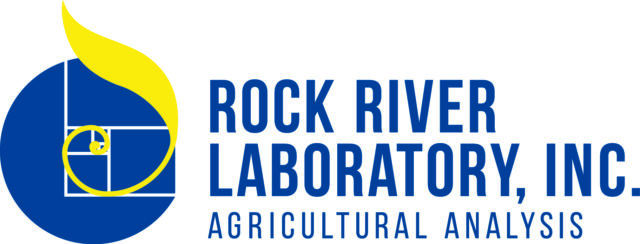U.S. milk production continues to grow steadily, based on USDA’s latest monthly report, released Feb. 21.
January 2017 milk production in the 23 major dairy states was estimated at just under 17 billion pounds, up 2.7 percent from January 2016. Total U.S. production, at 18.13 billion pounds, was up 2.5 percent.
January cow numbers were estimated at 8.69 million head, 67,000 head more than January 2016, and 5,000 head more than December 2016.
The overall increase in cow numbers is skewed a bit by Texas and New Mexico, which are up a combined 54,000 head from Winter Storm Goliath-impacted numbers of a year ago. Other states with notable increases in cow numbers compared to a year ago were Idaho and Michigan (each +12,000), Kansas (+9,000) and Colorado (+7,000).
Elsewhere, it remains stronger output per cow that is building milk production. January production per cow in the major states averaged 1,957 pounds, 37 pounds more than January 2016.
USDA also revised December 2016 production down slightly in the major states. At 16.78 billion pounds, the revision was down about 2 million pounds compared to last month’s preliminary estimate.
With that revision, 2016 U.S. milk production was estimated at 212 billion pounds, 1.8 percent more than 2015. Production per cow averaged 22,774 pounds, 378 pounds more than 2015. The average number of milk cows was estimated at 9.33 million head, up 0.2 percent from 2015.
Price outlook
While the milk price outlook remains brighter, continuous strong milk production growth and the recent cheese market is adding some nervousness to that optimism, according to Mark Stephenson, Director of Dairy Policy Analysis at the University of Wisconsin-Madison, and Bob Cropp, dairy economics professor emeritus.
In their monthly podcast, February block cheese prices swung below prices for barrels, pulling Class III milk futures to the downside. And, while the Class III price has declined, the Class IV price has dropped even more.
Riding along with the declining benchmark prices are declining premiums and basis in most parts of the country, further reducing the price farmers actually see for their milk.
“With this level of milk production, good domestic sales and dairy exports will be required to strengthen milk prices,” said Bob Cropp, professor emeritus at the University of Wisconsin-Madison.
Writing in his latest Dairy Situation and Outlook, Cropp said the milk production increase, combined with weaker post-holiday cheese and butter demand and heavy inventories will bring some weakening of milk prices to start the year.
The February Class III milk price should be about $16.85 per hundredweight (cwt), Cropp said. He forecasts the Class III price to be in the low $16’s through about May, increase to the $17’s and then peak in the high $17’s or even low $18’s by October or November. That would yield a 2017 average of about $17.15 per cwt, compared to $14.87 per cwt in 2016.
The butter price remained strong despite large inventories, but nonfat dry milk prices have declined. So the February Class IV price will drop from January to about $15.65 per cwt, Cropp forecast. He projects the Class IV price may stay in the $15’s in the first half of the year, reaching the $16’s or even the $17’s for the last half of the year, for a 2017 average of $16.30 per cwt, compared to $13.77 per cwt in 2016.
On a positive note, domestic sales of butter and cheese are expected to continue to show growth in 2017, and dairy exports improved in the last quarter of 2016.
U.S. nonfat dry milk/skim milk powder prices were competitive on the world market during all of 2016, with exports 8 percent higher than the 2015 and 10.6 percent higher than the previous record set in 2014.
Milk production for four of the five leading exporters — European Union, New Zealand, Australia and Argentina — is expected to continue below year-ago levels at least for the first half of the year, with only modest increases as a possibility for the last half of the year. Increase demand by China and others is expected, pushing up world dairy product prices.
If domestic and export markets remain strong, the level of milk production will be a key factor in how much milk prices improve. With low feed prices and improved milk prices, USDA forecasts cow numbers will increase 0.4 percent in 2017. Combined with a 1.9 percent increase in milk output per cow, total U.S. milk production is projected to grow another 2.3 percent in 2017.
Cropp said USDA’s forecast of a 1.9 percent increase in milk per cow could be on the high side. The annual increase in milk per cow for the past 5 years has been 1.3 percent.
Dairy margins have continued to weaken slightly since the end of January due to a combination of lower milk prices and higher feed costs, according to Commodity & Ingredient Hedging (CIH) LLC.
Milk prices have been under pressure, especially Class IV relative to Class III. Much of this disparity is driven by product price performance. Affecting the Class IV price, the nonfat dry milk price is down 13.4 percent year to date, with the butter prices down 4.8 percent.
During the same period, the price of whey, impacting the Class III price, is up 9.4 percent, helping offset softer cheese trade, which has declined 3.8 percent since the end of the year.
Large intervention stocks of nonfat dry milk in the EU also hang over the global powder market.
Despite near-term milk price deterioration, however, margins remain historically strong through all of 2017, according to CIH.![]()

-
Dave Natzke
- Editor
- Progressive Dairyman
- Email Dave Natzke








